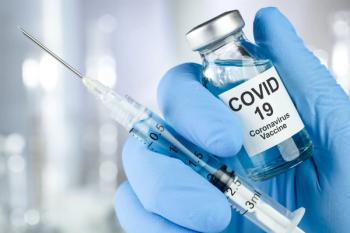
Patients With Heart Failure May Need Adjusted Physical Activity Intensity Thresholds
Widely accepted guidelines that patients with cardiac diseases still get at least 150 minutes of exercise each week may need to adjust their accelerometer data for patients with heart failure.
Widely accepted international guidelines that patients with cardiac diseases still get at least 150 minutes of weekly moderate to vigorous physical activity (MVPA) may need to adjust how they convert their accelerometer data into behaviorally relevant metrics regarding exercise intensity for patients with chronic diseases, like
Oxygen consumption (VO2) via indirect calorimetry was the benchmark used to establish physical activity (PA; measured in unites of
Energy expenditure was converted into measured metabolic equivalents (
Both standard and measured METs were higher for all standing and walking activities when measured among the study participants compared with established metrics. Also, there was an overall strong correlation between sum of vector magnitudes (SVM), one of the accelerometer values taken, and METs (P < .001 for all) for all 3 accelerometers worn:
- Left wrist: rRM = 0.84
- Right wrist: rRM = 0.80
- Waist: rRM = 0.86
This strong relationship was also seen between the waist mean amplitude deviation (MAD), the second accelerometer value measured, and METs (rRM = 0.67; P < .001). However, the correlations between left wrist MAD and METs (rRM = 0.19; P = .026) and right wrist MAD and METs (rRM = 0.33; P < .001) were weak and moderate, respectively.
Results additionally show 50% lower accelerometer values for the exercise intensity threshold of inactivity (< 1.5 METs) and for MVPA (> 3.0 METs) among participants vs such published thresholds, according to data from the write and hip accelerometers worn:
- Inactivity threshold: 45.8 mg is usually applied, but the study results showed the following values:
- Right wrist: SVM, 13.3-18.6 mg; MAD, 14.2-18.4 mg
- Left wrist: SVM, 14.4-16.9 mg; MAD, 15.4-18.8 mg
- Waist: SVM, 7.6-11.1 mg; MAD, 1.0 mg
- MVPA: 93.2 to 100 mg is usually applied, but the study results showed the following values:
- Right wrist: SVM, 43.1-49 mg; MAD, 24.7-29.5 mg
- Left wrist: SVM, 43.6-47.0 mg; MAD, 20.7-24.2 mg
- Waist: SVM, 40.6-47.2 mg; MAD, 2.4-2.6 mg
Patients were told to adhere to any medication regimens and to fast before their morning evaluations so as not to affect their resting metabolic rate measures. Exercise capacity and rate of perceived exertion were measured via the incremental shuttle walk test.
“Our results suggest that application of previously published intensity thresholds based on calibration studies of adults without chronic disease potentially risks underestimation and misclassification of PA in HF patients,” the authors concluded. “Larger studies, using our approach are now required to clarify PA levels in the various severity levels of HF, taking account of comorbidity.”
For all patients included in the study, their heart failure had to have been officially diagnosed by a hospital specialist and they had to exhibit New York Heart Association class I to III symptoms. All measurements were taken at the the sports science lab at the University of Exeter St. Luke’s campus.
Reference
Dibben GO, Gandhi MM, Taylor RS, et al. Physical assessment by accelerometry in people with heart failure. BMC Sports Sci Med Rehabil. Published online August 12, 2020. doi:10.1186/s13102-020-00196-7
Newsletter
Stay ahead of policy, cost, and value—subscribe to AJMC for expert insights at the intersection of clinical care and health economics.









































